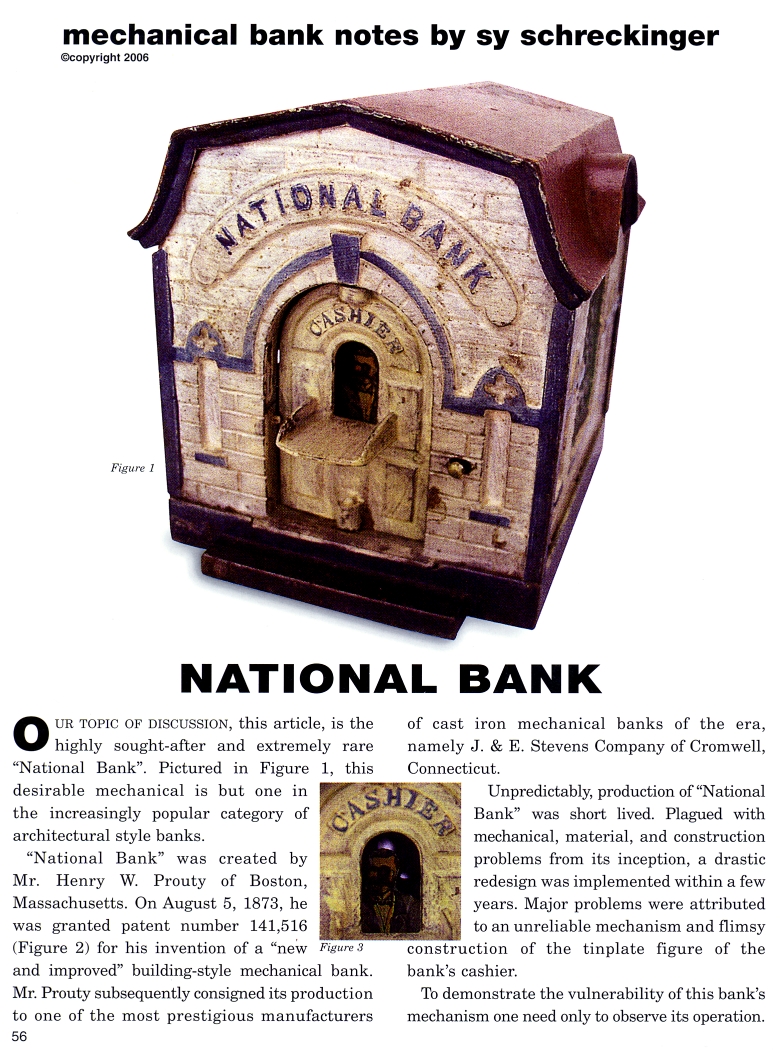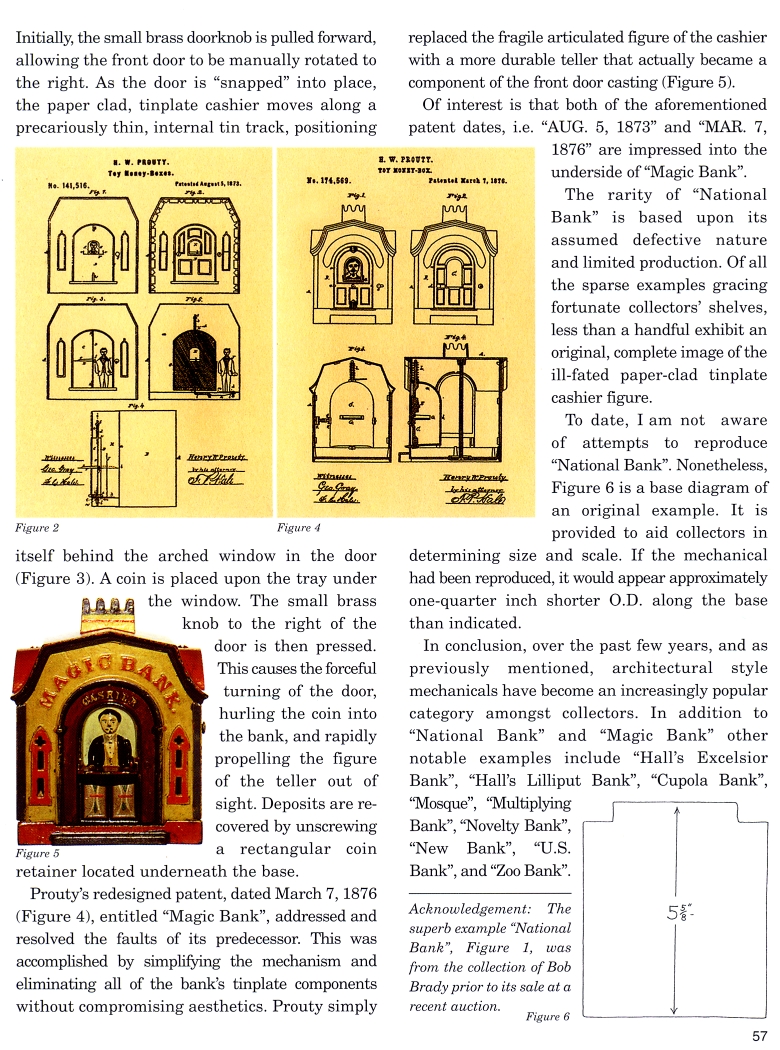|
National Bank
by Sy Schreckinger – ANTIQUE TOY WORLD Magazine – July, 2006
Our topic of discussion, this article, is the
highly sought-after and extremely rare "National Bank". Pictured in Figure
1, this desirable mechanical is but one in the increasingly popular
category of architectural style banks.
"National Bank" was created by Mr. Henry W. Prouty of Boston,
Massachusetts. On August 5, 1873, he was granted patent number
141,516
(Figure 2) for his invention of a "new and improved" building-style
mechanical bank. Mr. Prouty subsequently consigned its production to one
of the most prestigious manufacturers of cast iron mechanical banks of the
era, namely J. & E. Stevens Company of Cromwell, Connecticut.
Unpredictably, production of "National Bank" was short lived. Plagued
with mechanical, material, and construction problems from its inception, a
drastic redesign was implemented within a few years. Major problems were
attributed to an unreliable mechanism and flimsy construction of the
tinplate figure of the bank's cashier.
To demonstrate the vulnerability of this bank's mechanism one need
only to observe its operation. Initially, the small brass doorknob is
pulled forward, allowing the front door to be manually rotated to the
right. As the door is "snapped" into place, the paper clad, tinplate
cashier moves along a precariously thin, internal tin track, positioning
itself behind the arched window in the door (Figure 3). A coin is placed
upon the tray under the window. The small brass knob to the right of the
door is then pressed. This causes the forceful turning of the door,
hurling the coin into the bank, and rapidly propelling the figure of the
teller out of sight. Deposits are recovered by unscrewing a rectangular
coin retainer located underneath the base.
Prouty's redesigned patent, dated March 7, 1876 (Figure 4), entitled
"Magic Bank", addressed and resolved the faults of its predecessor. This
was accomplished by simplifying the mechanism and eliminating all of the
bank's tinplate components without compromising aesthetics. Prouty simply
replaced the fragile articulated figure of the cashier with a more durable
teller that actually became a component of the front door casting (Figure
5).
Of interest is that both of the aforementioned patent dates, i.e.
"AUG. 5, 1873" and "MAR. 7, 1876" are impressed into the underside of
"Magic Bank". The rarity of "National Bank" is based upon its assumed
defective nature and limited production. Of all the sparse examples
gracing fortunate collectors' shelves, less than a handful exhibit an
original, complete image of the ill-fated paper-clad tinplate cashier
figure.
To date, I am not aware of attempts to reproduce "National Bank".
Nonetheless, Figure 6 is a base diagram of an original example. It is
provided to aid collectors in determining size and scale. If the
mechanical had been reproduced, it would appear approximately one-quarter
inch shorter O.D. along the base than indicated.
In conclusion, over the past few years, and as previously mentioned,
architectural style mechanicals have become an increasingly popular
category amongst collectors. In addition to "National Bank" and "Magic
Bank" other notable examples include "Hall's Excelsior Bank", "Hall's
Lilliput Bank", "Cupola Bank", "Mosque", "Multiplying Bank", "Novelty
Bank", "New Bank", "U.S. Bank", and "Zoo Bank".
Acknowledgement: The superb example "National Bank", Figure 1, was
from the collection of Bob Brady prior to its sale at a recent auction.
|


